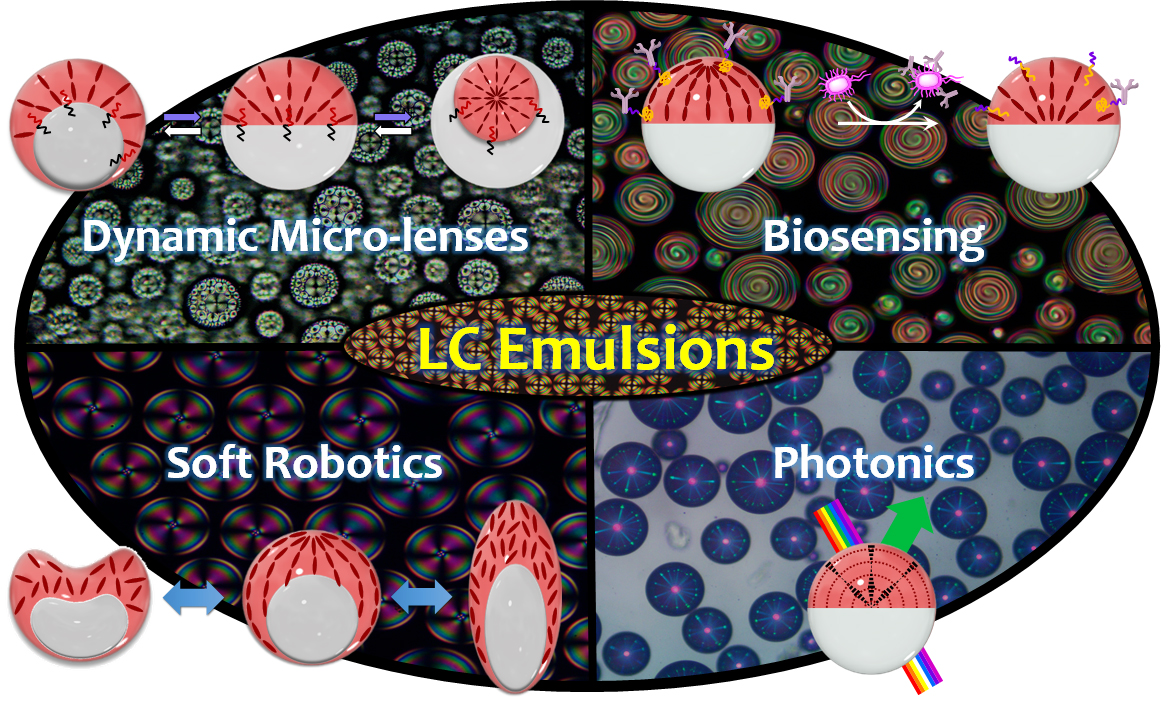Complex Liquid Crystal Emulsions
Emulsions are ubiquitous in our daily life (e.g., milk, paint, cosmetics), but they are also central components of medicine, food, and performance materials. In particular, complex emulsions (i.e., droplets that contain two or more phase-separated liquids) comprising liquid crystals (LCs) is an emerging research field, in which the newly found ability to dynamically change the internal LC organization and the structure of droplets present a new frontier in the design of functional materials relevant to optics, sensing, and active matter.

Our main objective is to develop LC emulsions (LCEs) and unlock their extraordinary multifaceted potential by creating novel integrated devices. Specifically, our research is focused on exploring four potential applications of LCEs: (1) LCEs containing multifunctional liquid crystals to create new dynamically controlled lensing devices, (2) LCEs that can form complex nanostructures, which are used as high-performance organic electronic devices, wherein the liquid crystal organization facilitates charge transport, (3) actuators based on LCEs that can be used as valveless micropumps in microfluidics or artificial muscles in micro-robotics, and (4) LCEs-based biosensors for pathogen detection without the need of complex specialized equipment (i.e., point-of-care biosensing).
Involved researchers: Alberto Concellón (This email address is being protected from spambots. You need JavaScript enabled to view it. ), José Luis Serrano
Key recent publications:
Liq. Cryst. 2024, https://doi.org/10.1080/02678292.2024.2325587
Angew. Chem. Int. Ed. 2023, 62, e2023088. https://onlinelibrary.wiley.com/doi/10.1002/anie.202308857
J. Am. Chem. Soc. 2021, 143, 9177-9182. https://pubs.acs.org/doi/full/10.1021/jacs.1c04115
ACS Cent. Sci. 2021, 7, 1166-1175. https://pubs.acs.org/doi/10.1021/acscentsci.1c00173
ACS Cent. Sci. 2020, 6, 1460-1466. https://doi.org/10.1021/acscentsci.0c00686
J. Am. Chem. Soc. 2019, 141, 18246-18255. https://doi.org/10.1021/jacs.9b09216